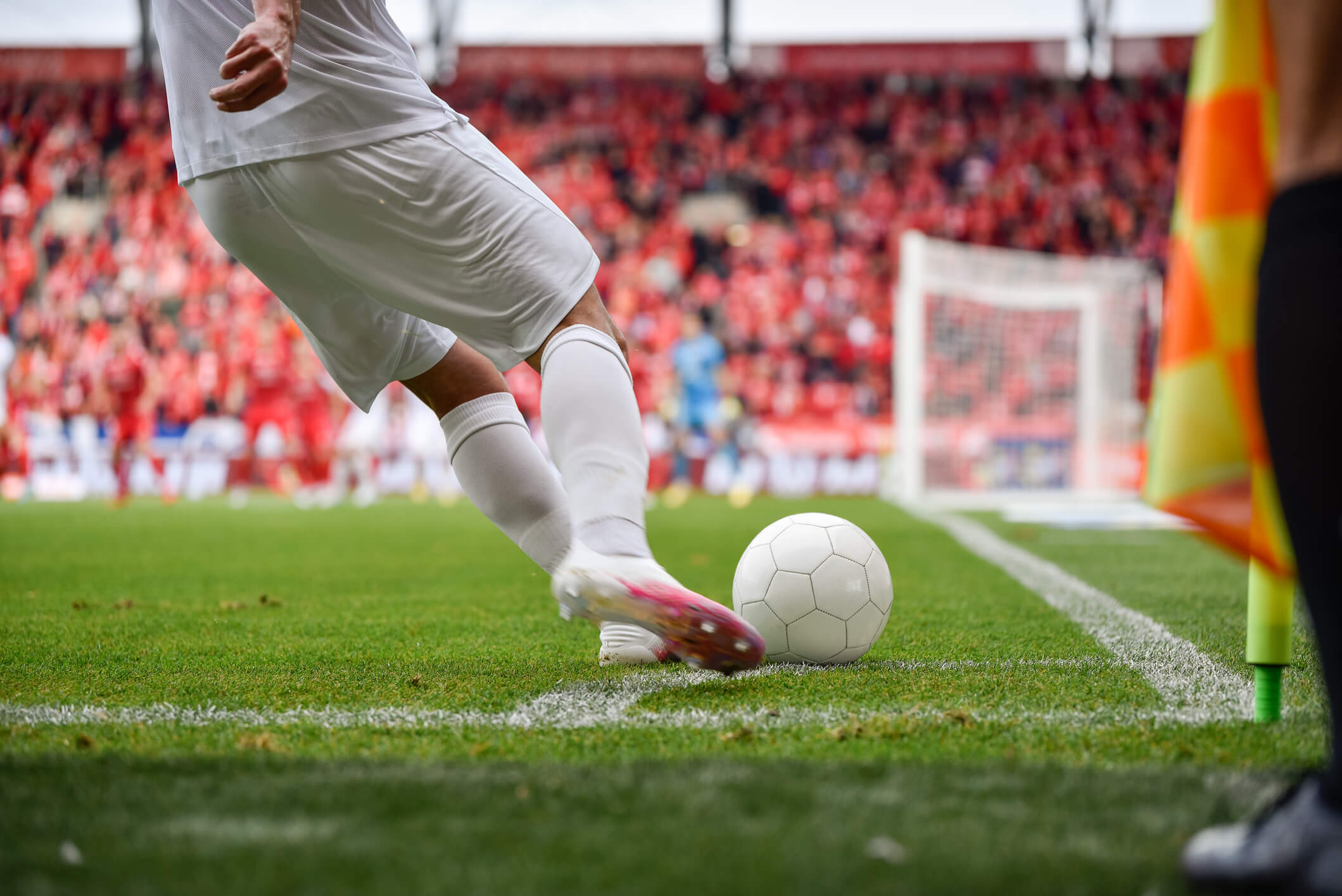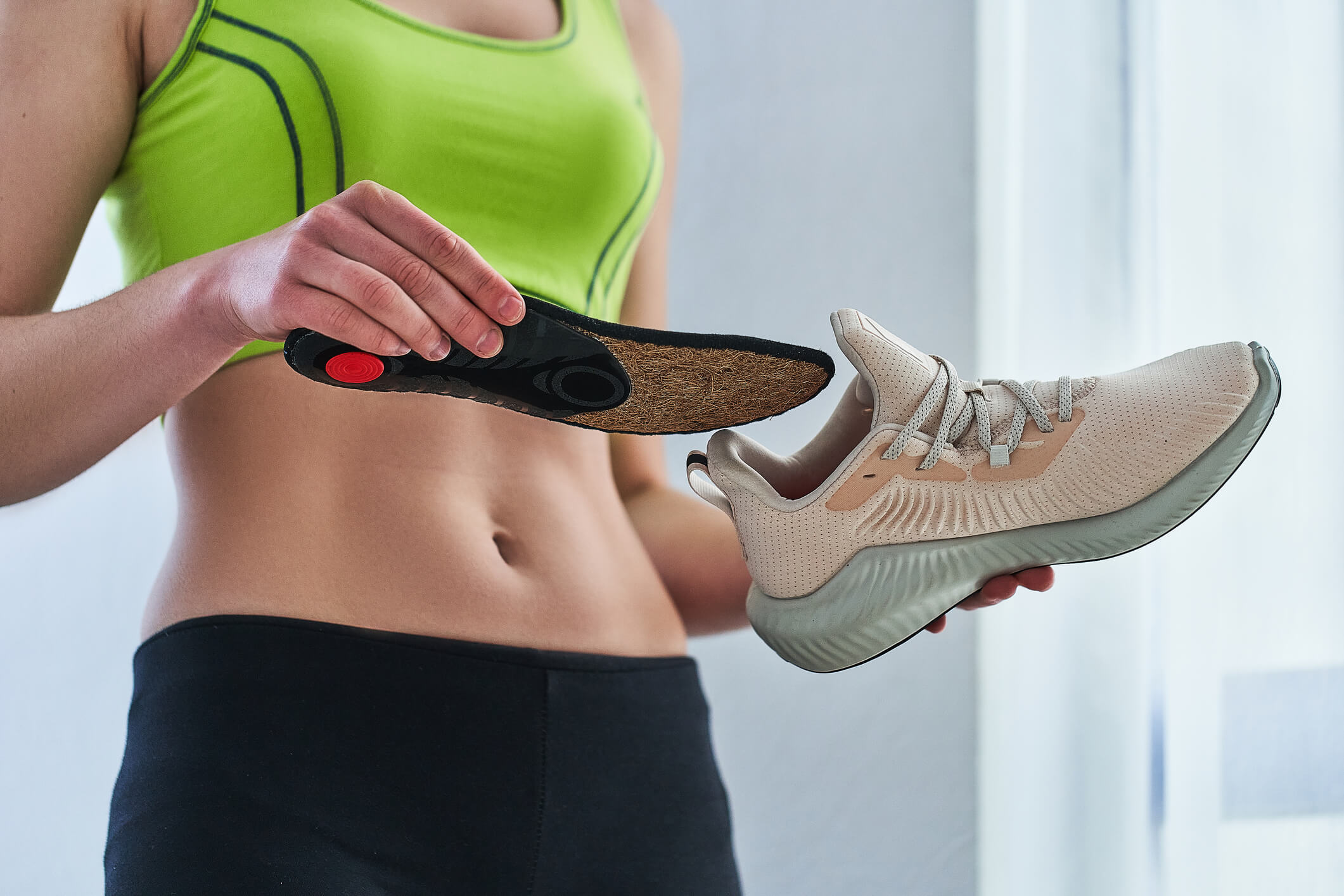
The right insoles for soccer cleats can be a game-changer. They can help improve performance, safety, and comfort.
Benefits of Cleats
If you’ve spent time on the field, you already know how beneficial cleats can be. For folks who are considering cleats for the first time or getting reacquainted with the game, there are good reasons to wear soccer cleats.
For instance, cleats can help players gain traction on the field. Soccer fields are typically grassy. And if the grass is damp and dewy, much less wet, it can become slippery. The studs on the bottom of cleats dig into the ground, so players have better traction. This improved traction allows them to make quick turns and stops and sprint off again without fear of slipping.
For these reasons, most cleats are designed to support the foot during sudden changes in speed and direction. They’re lightweight and fit closely to the foot, so players can feel the ball. The added stability can help prevent injuries and allow players to move more efficiently and accurately to dribble, pass, and shoot. In addition, the material can help protect the feet from impacts with the ball, other players, and the ground.
Another reason for a good pair of cleats (with good insoles) is that soccer involves running for long periods, often on hot, hard surfaces. Footwear that provides a good cushion and appropriate arch support can reduce fatigue and discomfort in the foot.
Cleats have become such an important aspect of the game that most soccer leagues have rules that require players to wear appropriate footwear with cleats. This is done to help the players stay safe, and the games remain fair.
Different types of cleats are designed for various types of playing surfaces, such as firm ground, soft ground, artificial turf, and indoor arenas. Choosing the right cleats for your game ensures optimal performance, comfort, and safety.
Are Insoles for Soccer Cleats Necessary?
All players are different, so insoles for soccer cleats may not be strictly necessary. However, they do offer several benefits that make them a valuable addition to your soccer gear. Here are a few reasons to consider using insoles with your soccer cleats:
- Comfort: Additional cushioning or protection from the hot ground can make your cleats more comfortable, especially during long periods of play. Insoles for soccer cleats can be especially beneficial on hard, hot surfaces. They can also help wick away moisture or help your feet stay cooler and drier, which makes them more comfortable as you play. It may also help reduce the risk of developing blisters and fungal infections.
- Fit: Insoles can make your cleats fit better, which helps reduce friction. This, in turn, helps reduce the risk of blisters and other foot issues and can help you perform optimally. Especially for players who have feet that are between sizes or with specific foot issues, this can be a game changer.
- Support: Players with flat feet or with high arches may need extra foot support. Insoles designed for soccer can help distribute pressure evenly across the foot, aligning the lower body and reducing the risk of injury.
- Performance: You can’t expect insoles (or cleats) to turn a casual player into a professional, but a good set of insoles can contribute to improvements in performance by enhancing comfort, fit, support, and control.
- Temperature Control: Temperature regulation is particularly important for soccer players, especially in extreme weather conditions. When temperatures drop, insoles can offer a layer of insulation, which keeps the feet warmer by reducing heat loss.
When made from breathable materials, insoles for soccer cleats can also help manage heat buildup and excess moisture. By allowing air to circulate and wick away sweat, insoles can keep the feet cooler and drier when it gets hot. Dry feet are more comfortable and better able to regulate temperature. This not only helps the feet stay more comfortable, but it helps reduce the risk of skin irritation like blisters.
Choosing the Best Insoles for Soccer Cleats
Choosing the best insoles for soccer cleats depends on your unique needs. Consider your foot shape, the playing conditions, and preferences for cushion and support. A few features many soccer players seek include:
- A slim design that easily fits into the shoe
- Good arch support that fits the natural contours of the foot
- Shock absorption to reduce the impact on joints and muscles
- And quality materials that are breathable and moisture-wicking to keep the feet dry and comfortable.
Blusol insoles are particularly notable for their heat-shielding properties. They’re designed to reduce heat transfer from the ground or turf to the player’s feet. That can be especially beneficial when it heats up during the spring and summer. Keeping the feet cool and comfortable can benefit performance as it keeps them from overheating, which can be uncomfortable and distracting. For players who are sensitive to heat, these types of insoles can be a game changer.
The right insoles may not be necessary, but they could be advantageous, depending on your needs. However, it’s essential to choose the right insoles for your needs. In addition, it’s important to select insoles for soccer cleats that fit well and don’t make them too tight or restrictive.
One caveat: If you choose to add insoles to your soccer cleats, it’s a good idea to use them for practice to ensure they don’t negatively impact your play before gameday.



Recent Comments